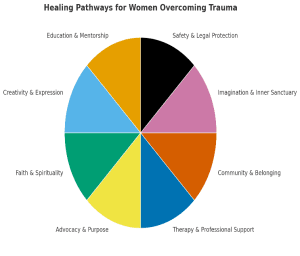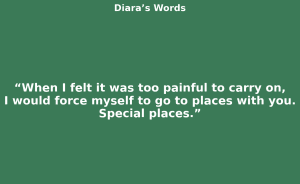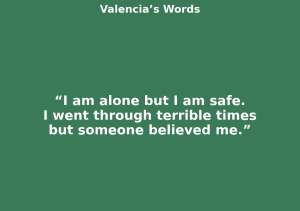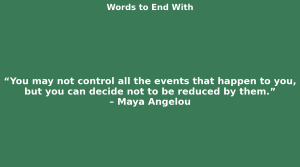Women Overcoming Trauma: Stories of Strength and Survival
Women surviving, healing, and reclaiming their lives are also part of unresolved trauma. No two healing pathways are the same. Each story shows us that resilience is not a straight line but a winding road shaped by personality, resources, relationships, and all too often, the silence or support of others.
In sharing these accounts, we draw from both survivors in the spotlight — whose stories have unfolded publicly — and survivors outside the spotlight, whose struggles are less visible but no less important.
For many survivors, it is not only the abuse that devastates them but also the silence of those who looked away, denied, or disbelieved. Breaking the silence is often what makes healing possible.

The Healing Pathways Wheel
Healing from trauma is not a single journey. Our diagram illustrates the many ways women may find strength after abuse, depending on their personalities, needs, and circumstances.
- Education & Mentorship – finding empowerment through learning or supportive teachers/mentors (e.g., Oprah).
- Creativity & Expression – healing through art, writing, music, or performance (e.g., Maya Angelou, Lady Gaga).
- Faith & Spirituality – drawing strength from belief systems, rituals, or spiritual practices (e.g., Elizabeth Smart).
- Advocacy & Purpose – turning pain into activism, helping others, or working to change systems (e.g., Tarana Burke, Gabrielle Union).
- Therapy & Professional Support – the vital role of counselling, medical care, and trauma-informed professionals (e.g., Selena, Valencia).
- Community & Belonging – safe relationships, chosen family, or solidarity movements (e.g., Valencia with her children’s home, Diara with Leanne’s family).
- Imagination & Inner Sanctuary – creative coping, fantasy, or inner places of safety (e.g., Diara’s imagined moments with Xander).
- Safety & Legal Protection – shelters, restraining orders, prosecutions, and other formal protections that create space for recovery (e.g., Selena).
The wheel is not prescriptive. Survivors may move between pathways, draw on several at once, or find new ones entirely. Its purpose is to show that there is no single road to resilience — only the path that works for each woman.
Obstacles on the Healing Path
Healing from trauma is never simple. Often, barriers slow, derail, or complicate survivors’ recovery, and these obstacles take on different forms depending on a woman’s visibility, though many of these obstacles apply universally. In this blog we describe two groups: survivors in the spotlight and survivors outside the spotlight. The distinction has nothing to do with value — all survivor voices matter equally. The difference lies in visibility. Those in the spotlight face obstacles magnified by public attention, while those outside it often face silencing in private spaces. Both deserve to be heard, believed, and supported.
For survivors in the spotlight:
- Public disbelief and scrutiny: media, lawyers, and strangers dissect their disclosures.
- The branding of them as liars, opportunists, or collaborators causes reputational backlash.
- Career sabotage: Speaking out has cost actresses like Mira Sorvino and Ashley Judd entire careers.
- Relentless exposure: They endure their trauma not just privately, but under constant public judgment.
For survivors outside the spotlight:
- Families and communities’ pressure many to keep abuse hidden “for the family’s sake.”
- Lack of resources: without shelters, therapy, or legal support, leaving dangerous situations far harder.
- Dependence on perpetrators: financial or emotional reliance can keep women trapped in cycles of abuse.
- Isolation: Without a public platform, they fear no one will believe them or even hear them.
What they share:
- A culture that too often doubts survivors and excuses perpetrators.
- New traumas or setbacks can disrupt the healing process.
- The profound difference it makes when even one person chooses not to stay silent and instead offers belief and support.
Different Pathways, Same Strength
Oprah Winfrey – Education and Mentorship
Oprah survived years of childhood sexual abuse. What helped her heal was the structure her father provided, the refuge of books and education, and the ability to use her platform to redefine her story. Her resilience grew from mentorship, creativity, and purpose-driven work.
Elizabeth Smart – Faith and Advocacy
Abducted at 14 and abused for nine months, Elizabeth found strength in faith, autonomy in choosing when and how to begin therapy, and later in advocacy. In founding her own foundation, she turned pain into purpose. Reclaiming agency and using her voice to protect others anchored her healing.
Tarana Burke – Community and Collective Healing
Founder of the ‘Me Too’ movement, Burke transformed her own childhood trauma into a collective movement for healing. She shows us that solidarity, advocacy, and the simple power of saying “me too” can break the silence that isolates survivors.
Fiction as Testimony: Diara (Sun on Your Back)
Diara’s story embodies many truths of trauma survival. Raised in a violent household and bound by family silence, she found unlikely ways to cope.

Imaginative coping: In moments of despair, she created “happy fictional places” with Xander — imagined trips to Mauritius and Victoria Falls. These were not escapism but survival:
“When I felt it was too painful to carry on, I would force myself to go to places with you. Special places. Trou aux Biches? Remember, you took me to Mauritius for my birthday, and we had dinner on the beach?” (Sun on Your Back, page 75)
She later admitted she believed she had survived only because of those imagined moments.
- Relationships: Leanne and her family offered stability and belonging.
- Professional support: A clinical psychologist helped her into a shelter and confronted André, breaking the silence around her abuse.
Diara’s story illustrates that healing can come through imagination, chosen family, and the courage of others who refuse to stay silent.
Real Lives, Real Resilience
Valencia – Safety and Belief
At just 12, Valencia collapsed in the street, miscarrying a pregnancy caused by repeated abuse in her mother’s home. The state provided protection, schooling, and regular counselling for her. Only months later did she disclose the truth: her mother’s evening visitors had repeatedly assaulted her.

The turning point was simple yet profound: people believed her.
“I am alone, but I am safe. I went through terrible times, but someone believed me.”
Her story underscores how protection, education, and belief can transform despair into resilience.
Selena – Complex Trauma and Gradual Rebuilding
Selena, 35, lived through years of domestic violence. A severe assault put her in the hospital, where nightmares surfaced. Therapy revealed they were memories of childhood abuse by her father.
Selena’s healing was complex: safety through a shelter, professional help to navigate both domestic violence and childhood trauma, and incremental steps like returning to work part-time. Her journey shows how trauma can resurface, disrupt healing, and make recovery non-linear — but with time, safety, and persistence, new life is possible.
When Powerful Men Harm and Others Stay Silent
Survivors like Virginia Giuffre, Cassie Ventura, and the women who spoke against Harvey Weinstein show us another layer: when the perpetrator is powerful, the world often calls survivors liars or collaborators. The trauma of not being believed compounds the original harm. Survivors outside the spotlight face the same disbelief and silencing, though their struggles often unfold quietly, without the world watching.
What helps them heal?
- Solidarity with other survivors.
- Owning their narrative through memoirs, testimony, or art.
- Legal victories, however partial.
- Therapy and grounding practices to cope with public re-traumatisation.
Yet, disruptions — like Virginia’s later experiences of domestic violence — remind us that healing is fragile. Progress can veer off course, forcing survivors to renegotiate their recovery repeatedly.
Breaking the Silence
From survivors in the spotlight like Oprah to survivors outside the spotlight like Valencia, and from fictional testimony like Diara to complex cases like Selena, these stories show women heal in diverse ways: through education, creativity, advocacy, imagination, therapy, chosen family, or simply the validation of being believed. But across every story, one truth stands out:
Silence hurts the most.
Communities should not leave survivors to heal alone. True resilience flourishes when communities break their silence, believe survivors, and share the burden of truth-telling.
If there is one lesson in these stories, it is this: survivors should not have to heal in isolation. We can all play a role in breaking the silence. Believe women. Speak out when it matters. Share these stories to prevent anyone from confusing resilience with suffering alone.
